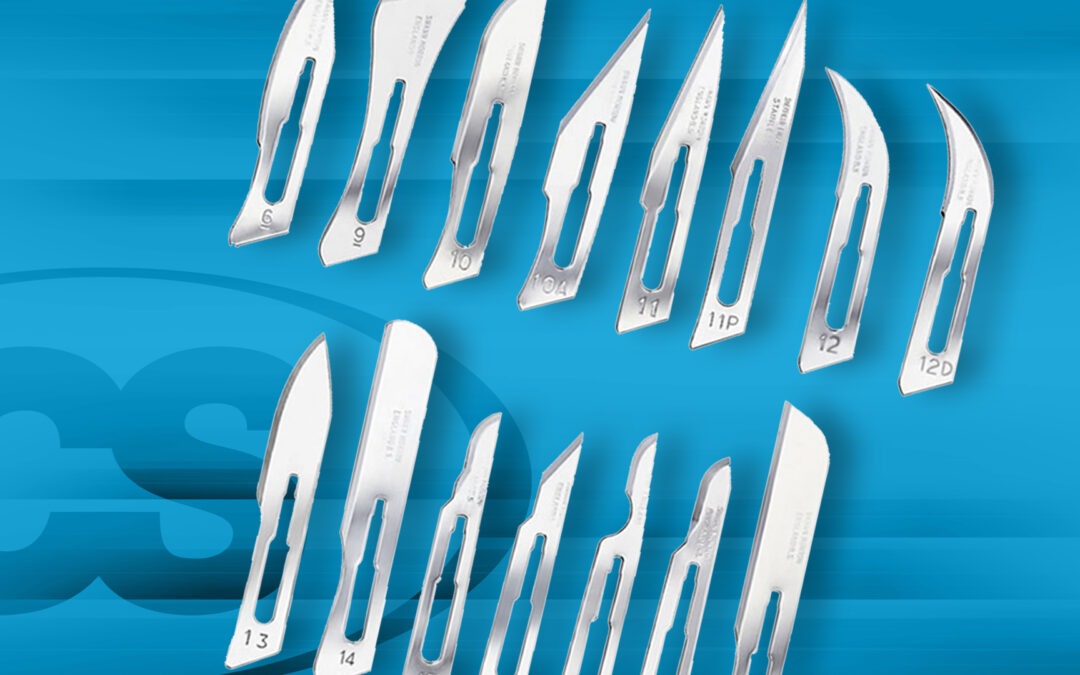Understanding the nuances and details of surgical tools ensures you’ll choose the right surgical blade for the success of any procedure. Blades come in various sizes, shapes, and materials, each suited for different tasks. Let’s break down the essentials so you can make informed decisions whether you’re choosing a blade for the operating room, veterinary office, or laboratory setting.
Surgical Blade Sizes Explained
Surgical blades are numbered to indicate their size and shape. Here’s a quick overview of some common blade sizes and their typical uses:
- #10 Blade: This curved blade is ideal for making large incisions in skin and muscle.
- #11 Blade: With a pointed tip, the #11 blade is perfect for precise, stab-like incisions.
- #15 Blade: A small, curved blade that’s great for short, delicate cuts.
- #20 Blade: Larger than the #10, it’s used for long incisions in procedures like orthopedic and general surgeries.
Selecting the correct size is crucial for minimizing issues and ensuring a successful procedure.
Blade Shapes and Their Uses
The shape of a surgical blade influences its functionality. Here are some common shapes and their applications:
- Curved Blades: Examples include the #10 and #15. These are excellent for smooth, sweeping cuts and are commonly used in general surgeries.
- Straight Blades: The #11 blade, for instance, is straight and pointed, making it ideal for precise, puncture incisions.
- Hooked Blades: These blades are used for specialized procedures like harvesting veins in bypass surgery. The #12 blade is also popular for dental and veterinary procedures.
Choosing the right shape can significantly impact the ease and effectiveness of the procedure.
Material Choices: What to Consider
Surgical blades come in different materials, each with its own advantages:
- Carbon Steel: Known for sharpness and durability, these blades are great for precise cuts but need careful maintenance to prevent rust.
- Stainless Steel: These blades resist corrosion and maintain their sharpness well, making them a popular choice.
- Ceramic Blades: Offering extreme sharpness and biocompatibility, ceramic blades are useful when metal allergies are a concern.
The material of the blade affects performance, longevity, and maintenance requirements. At Swann Morton we manufacture surgical blades made from steel and have been doing so since the 1930s.
Choosing the Right Blade
When selecting a surgical blade, consider the type of procedure, the characteristics of the tissue, and personal preferences. Here’s a quick guide:
- Procedure Type: Match the blade size and shape to the specific surgical task. For example, use a #15 blade for delicate tissue work and a #20 for larger incisions.
- Tissue Characteristics: Consider the density and thickness of the tissue. Dense tissue may require a sturdier blade.
- Surgeon’s Preference: Experienced surgeons often have preferred blades based on their comfort and familiarity, which can influence the choice.
Get Blades, Scalpels, Handles, and More from Cincinnati Surgical
At Cincinnati Surgical, we offer a comprehensive range of surgical instruments designed to meet the highest standards of performance and reliability. Our catalog includes a variety of surgical blades, scalpels, handles, and other essential tools, all crafted with precision to support surgeons in delivering the best possible care.
With a commitment to quality and innovation, Cincinnati Surgical and Swann Morton ensure our products are both durable and effective. Whether you need instruments for general surgery, specialized procedures, or routine clinical use, you can trust us to provide the right tools for every situation.
For more information and to explore our range of surgical blades, visit Cincinnati Surgical.


Recent Comments